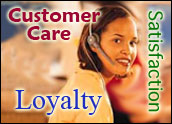
Last month, open source CRM provider Zurmo released a beta version of a new app that staked out new ground in this mature software category: The app was built with gamification techniques and a game-oriented user interface in the hope of spurring user adoption.
“It is a direction that is a bit contrarian to typical CRM product development,” admitted Ray Stoeckicht, cofounder of Zurmo Open Source CRM.
“But we think it will address a key problem in CRM that has yet to be solved,” he told CRM Buyer.
Simply put, companies still have to coax users to adopt sales force automation, marketing automation and CRM suites, despite the advances these applications have made from the early iterations with their decidedly unfriendly user interfaces.
“You find the majority of sales reps don’t use these systems,” Stoeckicht said.
Happy Birds
One example of Zurmo’s gamification approach are “early bird” and “night owl” badges that users get when they log onto the system before or after normal working hours.
“We wanted to reward user for doing the right things and doing them consistently,” Stoeckicht said.
The industry will see more CRM apps come to market with this approach, he predicted.
When the company was researching the product, it couldn’t find any that had gamification embedded directly into the system, recalled Stoeckicht.
However, “there are a number of add-ons and plug-ins along these lines and those seems to be popular,” he said.
A Popular Trend in Other Industries
Certainly, gamification has worked in enticing people to adopt other platforms, applications and systems that they otherwise might not have, Rajat Paharia, Bunchball’s founder and CPO, told CRM Buyer.
“Gamification is being used to power customer loyalty programs. I have seen it be used to motivate kids to exercise more in specialty apps. Adobe has gamified the learning of Photoshop,” he said.
Other examples include Microsoft, which recently introduced a new plug-in for its Visual Studio development program, which gamifies the code-writing process for software developers; and Marriott International, which launched a gamified recruiting tool on Facebook last year called “My Marriott.”
Boosting Behavior by 20 Percent to 200 Percent
Applied correctly, gamification can increase user behavior by 20 percent to more than 200 percent, said Kevin Akeroyd, SVP of field operations for Badgeville.
It as been applied in support desk software, corporate training, collaboration and community software. Sales professionals, in particular, respond well to gamification, he told CRM Buyer.
“They are inherently competitive,” Akeroyd noted, which means games not only goose performance, but also reward sales reps for properly updating and maintaining information along the sales process.
Be Wary of Glory-Grabbing Employees
Gamification can deliver results, agreed Morgan Norman, cofounder and CEO of WorkSimple.
But the “games” must be designed around healthy competition and not focused on who has the most points, he cautioned.
“For example, if gamification is centered around social performance — who contributed to a team goal or whose feedback had the most impact on an objective — the group as a whole will actually benefit, instead of one employee getting a gold star,” Norman told CRM Buyer.
“When only one person gets some glory, it doesn’t do much for the team, and it can actually get a little too competitive,” he said.
“The ultimate success of gamification programs for the enterprise requires approaching these rewards systems as portable reputation programs across all enterprise experiences, not just within an individual application,” Akeroyd added.
“The more places a business can surface employee status and missions,” he said, “the more adoption and value companies will experience of their gamification programs.”























































